Known as Mehmed the Conqueror, Ottoman Sultan Mehmed II was just 21 years old when he took control of Constantinople and defeated the Byzantine Empire in 1453.
In April 1453, the Ottoman Sultan Mehmed II marched on the fortress city of Constantinople. And after laying siege to the Byzantine capital for 53 days and bombarding its great walls with cannon fire, he brought the city to its knees and conquered the last vestige of the Roman Empire in Europe.
For this daring feat, he was given the title Mehmed the Conqueror — Fatih Mehmed in Turkish. But his exploits were far from over.
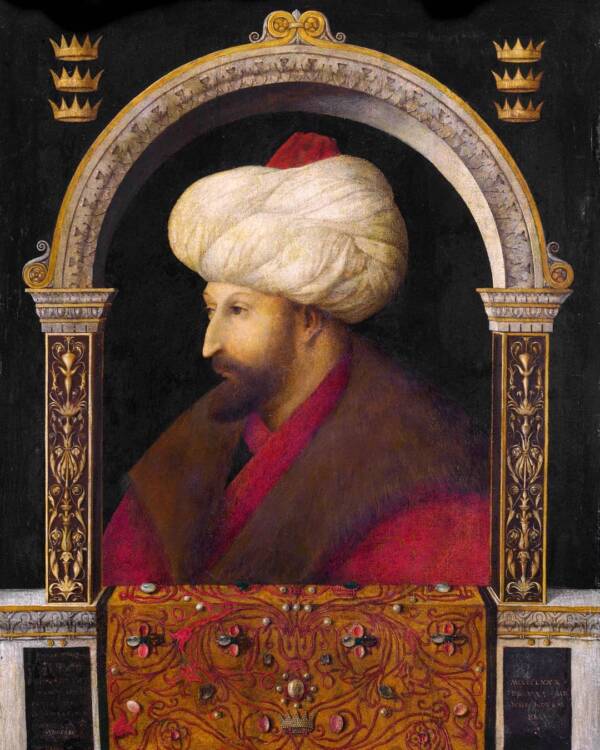
Wikimedia CommonsPortrait of Ottoman Sultan Mehmed the Conqueror by Italian painter Gentile Bellini, 1480.
Mehmed II had plans to spread the Ottomans far into former Byzantine strongholds and sought to restore the faded glory of an eastern Mediterranean empire. Soon, he defeated the real-life Dracula, encouraged the development of the arts and sciences, and greatly expanded the reach of Islam.
But while Mehmed II’s accomplishments are numerous, and he was a legend in his own time, few in the West have ever heard of him.
How Mehmed II Became A Child Sultan
Mehmed II was born in Adrianople, Thrace, on March 30, 1432, the fourth son of the ruling Ottoman Sultan Murad II. According to tradition, when he reached the age of 12, he was sent to the city of Manisa, near the Aegean Sea, with his two tutors.
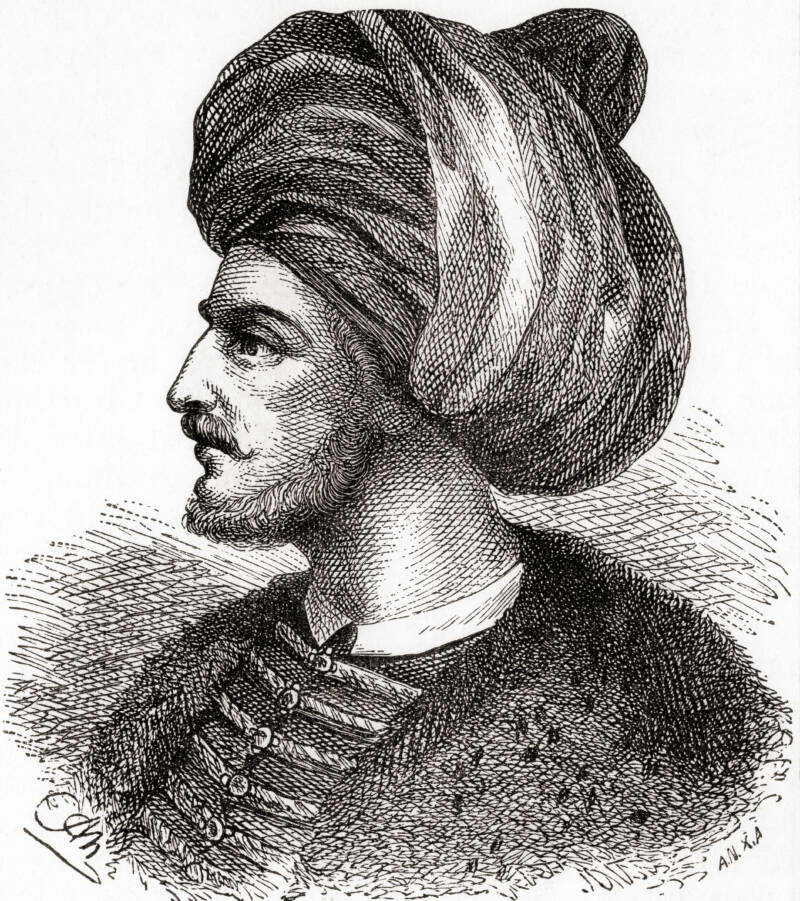
Universal History Archive/Universal Images Group/Getty ImagesMehmed II, aka Mehmed the Conqueror, 1432-1481.
In 1444, Murad signed an important peace treaty meant to halt the fighting between the Turks and a crusader army led by the Hungarians. As a part of the agreement, Murad abdicated and set his young son on the throne at Edirne, then the Ottoman capital.
The young Mehmed was beset by internal unrest between two rival groups — on one side, the grand vizier Çandarlı Halil, and on the other, the viziers Zaganos and Şihâbeddin. Both factions claimed they were protecting the rights of the child sultan, but both were only using him as a means to claim more power for themselves. However, they weren’t the only ones looking to take advantage of the situation.
Almost as soon as Murad was out of the way, Hungary violated the peace treaty, and the participants of the crusade — led by the Hungarian general John Hunyadi and including many of the major eastern European kingdoms like Poland and Bohemia — re-launched their offensive with the support of the pope in Rome.
Murad II was recalled to the capital to lead the defense of Ottoman territory with an army of between 40,000 and 50,000 men. Outnumbering the Crusaders by as many as two-to-one, the Ottomans were victorious when the two sides fought at the city of Varna.
With the threat of the crusade eliminated, Murad resumed his rule as Ottoman Sultan, so he sent his young son away again with his tutors to continue his studies. So ended Mehmed II’s first rule as Ottoman Sultan, a reign of about two years.
Why Mehmed II Got A Second Chance At Ruling
Mehmed II was 18 years old when his father died, news of which was sent to Mehmed through a messenger in a sealed envelope. Eager to travel to Edirne before news of the accession was announced to the public — and out of fear that the people might revolt before he arrived — Mehmed mounted his horse and rushed to the capital, declaring to his followers, “Let those who love me follow me.”
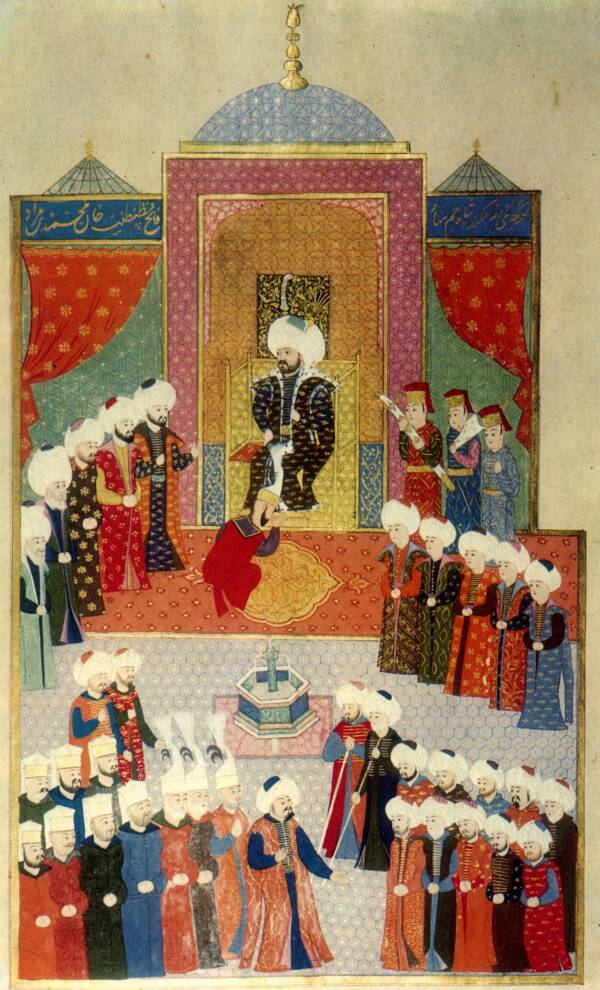
Topkapi Palace Museum/Wikimedia CommonsA 16th-century painting of the royal accession of Mehmed II in Edirne in 1451.
He arrived in Edirne with his supporters and officially assumed the Ottoman throne for the second time on February 18, 1451.
He immediately consolidated his power and eliminated rival claimants. One account even states that he had his father’s youngest infant son drowned in his bath. Later, Mehmed II officially enacted a fratricide law that stipulated, “Whichever of my sons inherits the sultan’s throne, it behooves him to kill his brothers in the interest of the world order. Most of the jurists have approved this procedure.”
He also reinforced the military and devoted himself to diplomatic and military arrangements. He neutralized the threats of Venice and Hungary — for the time being, anyway — with peace treaties, as he had a much grander goal in mind: the capture of Constantinople.
The Fall Of Constantinople
Constantinople had been the capital of the Byzantine Empire — so-named to differentiate this vestigial eastern half of the Roman Empire from the western Roman Empire, which purportedly fell in 476 A.D. — for more than a thousand years.
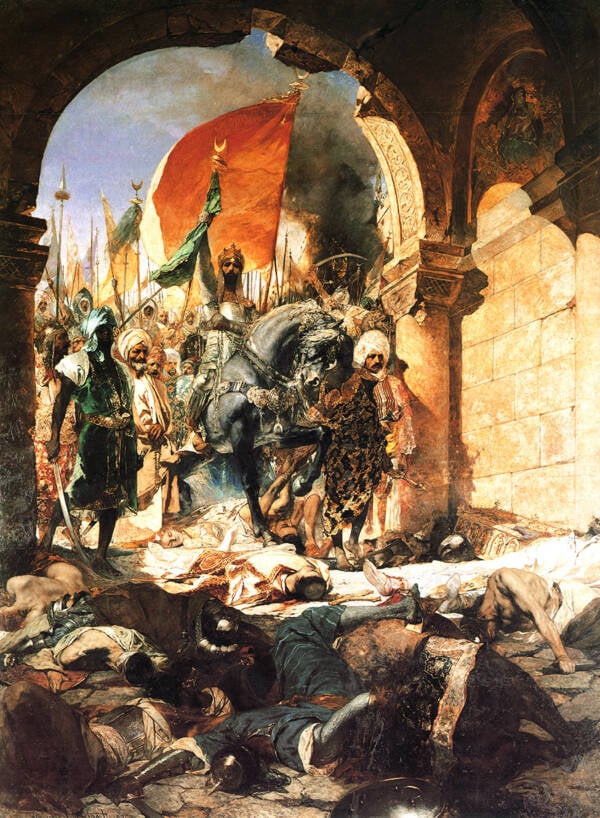
Wikimedia CommonsOttomon Sultan Mehmed II became Mehmed the Conqueror after taking the 1,000-year-old fortress capital of the Byzantine Empire, Constantinople, in May 1453.
During its millennium of history, it faced innumerable sieges and attacks. But nearly everyone turned back due to the city’s highly defensible location and the strength of its famous Theodosian Walls — three layers thick and 12 meters tall at their highest, with intricate defensive structures within and without.
The Muslim prophet Muhammad famously said, “One day Constantinople will be conquered. Great is the commander who will conquer it. Great are his soldiers.” Muslim rulers after that saw Constantinople as the ultimate prize, but none had yet succeeded.
It was Mehmed’s dream to succeed where these predecessors failed and to take the Christian capital for the Ottoman Empire. According to a chronicle that Mehmed II had commissioned, he had dreamed of capturing Constantinople since childhood. He famously declared that there was only one thing he wanted. “Give me Constantinople,” he said.
On April 6, 1453, his forces began the most famous siege in western history. His plan to take the fortress city of the Byzantines rested on two advantages: his ranks of Janissaries — well-trained, elite soldiers — and the most powerful cannons the world had ever seen.
The siege was relatively short by historical standards, and by May 29, Mehmed II led the final attack on the city himself on a breach in the city’s walls near the Gate of St. Romanus. Once inside, the fight for Constantinople was over quickly, and Mehmed II captured the city, officially bringing the Roman Empire to an end.
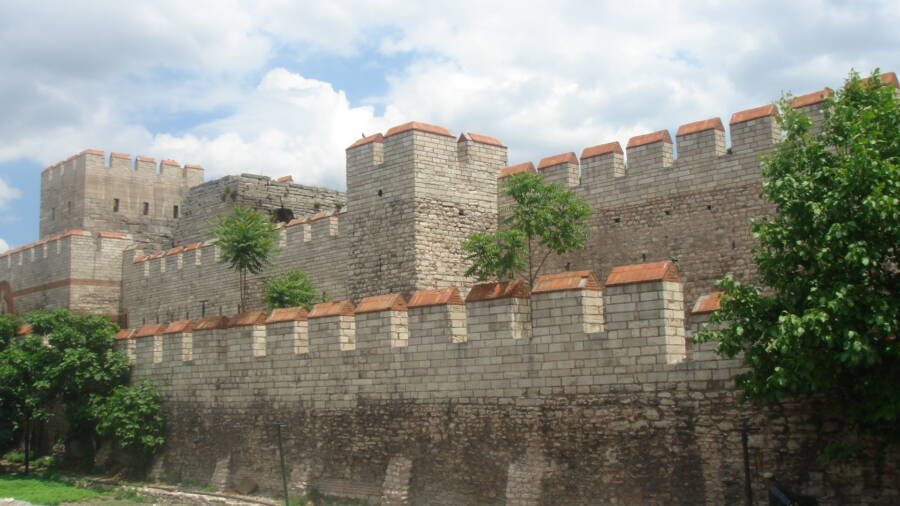
Wikimedia CommonsA surviving section of the famous Theodosian Walls of Constantinople. At its highest, the 4-mile-long inner wall stood nearly 40 feet tall.
The sacking of a city after a siege has never been pretty or orderly, but Mehmed II quickly ended his army’s most destructive impulses during the fall of Constantinople. It was not Mehmed’s intention to plunder the city and return home. Instead, he aimed to restore the old glory of the Christian capital as a Muslim one.
He converted churches into mosques throughout the city — including the world-famous Hagia Sophia cathedral, which became the Ayasofya mosque. This act of transforming the most important church in Christendom after St. Peter’s Basilica in Rome signified the city’s transformation more than anything.
He also established various charitable foundations and started populating his new capital, encouraging the Greeks and Genoese that had fled to return and bringing in Muslim and Christian groups from Anatolia and the Balkans.
Furthermore, in a forward-thinking decision, he established religious pluralism by setting up a Jewish grand rabbi, an Armenian patriarch, and a Greek Orthodox Patriarchate. He created a culture of learning and invited Greek scholars and Italian humanists to his court. He also encouraged studies in mathematics, astronomy, and Muslim theology.
How Mehmed II Expanded The Ottoman Empire
While the West saw the fall of Constantinople as the end of the Roman Empire, Mehmed saw himself as the continuation of the long line of Roman Emperors — Mehmed II even took on the title Kayser-i Rum — which translates to “Roman Caesar.” Inspired by the glory of the ancient empire he had conquered and the legacy of Alexander the Great, Mehmed’s goal was to rule over a similarly vast kingdom.
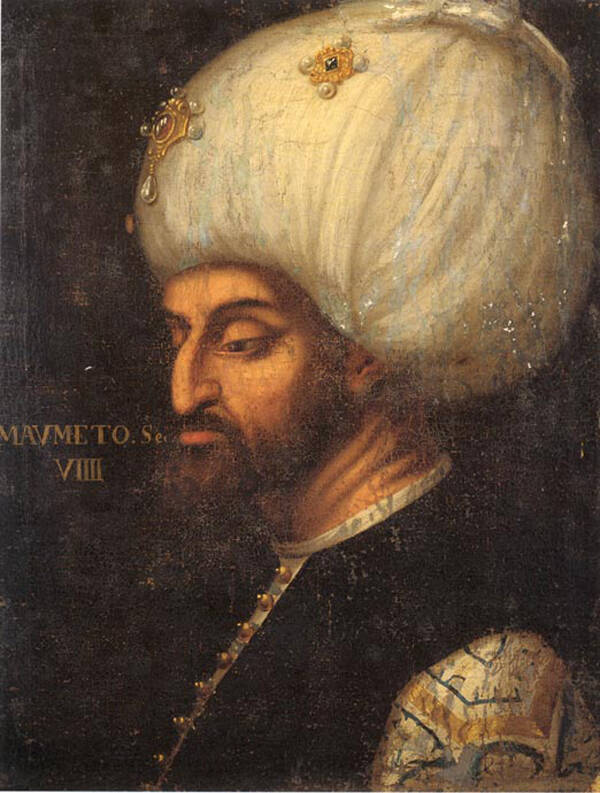
Badisches Landesmuseum | Wikimedia CommonsA 16th-century portrait of Mehmed II by Italian artist Paolo Veronese.
According to a Venetian envoy, Mehmed II declared that he would “advance from East to West, as in former times the Westerners advanced into the Orient. There must… be only one Empire, one faith and one sovereignty in the world.”
Mehmed II’s name spread quickly through Europe, the Middle East, and Africa after the fall of Constantinople, and he was called Mehmed the Conqueror forever on. Soon, he turned his attention toward expanding his empire even further. Starting in 1453, he led a series of campaigns against Serbia, finally annexing the kingdom in 1459, and led his forces into Morea, which was taken and added to the Ottoman Empire.
He saw the Ottoman state as the champion of the Muslim faith, standing in opposition to Christian Europe. Europe, meanwhile, saw the fall of Constantinople as nothing short of a cataclysmic event that signaled the end of days. And in 1454, the pope invited the Christian leaders of Europe to join forces and prepare another crusade against the Ottomans.
Mehmed knew full well that the Christian kingdoms in Europe would not take the loss of Constantinople lightly, so he moved swiftly to neutralize the threat by signing a treaty with the independent Italian state of Venice, because crusader armies relied almost exclusively on the power of Venice’s navy to get themselves to the east. With the threat from the sea eliminated, Mehmed turned his sights to the north and west.
The Bloody War Against Vlad III Dracula
In 1462, Mehmed II began his engagement with his most famous adversary, Vlad III Dracula, the prince of Wallachia, whose cruelty provided the real-life inspiration for Bram Stoker’s famous novel Dracula. Vlad Dracula in real life was no less fearsome than his fictional counterpart, as Mehmed II would soon learn.

Wikimedia CommonsA portrait of Vlad III Dracula, known as Vlad the Impaler, Prince of Wallachia.
That same year, Vlad III led a campaign against Ottoman territory and captured a large Ottoman force. As a warning to Mehmed II, Vlad III won himself the name Vlad the Impaler after impaling more than 20,000 Turkish prisoners — while they were still alive.
“We killed 23,884 Turks without counting those whom we burned in homes or the Turks whose heads were cut by our soldiers,” Vlad III wrote of the affair. “Thus… I have broken the peace with [Mehmed II].”
Indeed, when Mehmed led a force into Wallachia in response and saw this “forest” of impaled men lined up around Vlad III Dracula’s capital city of Târgoviște, the horrified Sultan reportedly asked, “How can we despoil of his estates a man who is not afraid to defend it by such means as these?”
Though Mehmed II would suffer a defeat at the hands of Vlad III in the famous Night Attack at Târgoviște, Mehmed burned several of Vlad III’s Wallachian towns and cities to the ground in retribution for the impaled prisoners. The Ottomans then withdrew while claiming a victory over Vlad III, even though the Wallachian prince was still in power and had inflicted horrific casualties.
It would take nearly twenty years for Mehmed II to get his revenge on Vlad III Dracula, albeit indirectly.
As popular of a fighter of Muslims as Vlad III was in the central and western kingdoms of Europe, those who had to live with him and under his rule were less enthusiastic about the Impaler. Imprisoned at one point for 13 years by the Hungarians, Vlad III was released so he could return to Wallachia and fight its Ottoman-backed ruler, Basarab Laiotă.
Though Vlad III managed to depose Laiotă for about two weeks in November 1476, in December 1476 or January 1477, Laiotă killed Vlad III with the aid of Ottoman forces, and his body was hacked to pieces. His head was sent to Mehmed II in Istanbul as confirmation that Vlad the Impaler was indeed dead.
Inside Mehmed II’s Final Campaigns
After witnessing Mehmed II’s string of victories across southeastern Europe, the pope brought together the Ottomans’ most significant rivals, Hungary and Venice, into an alliance with an eye toward another crusade. A new crusader army was formed, and their offensive began in 1463.

Bilkent Üniversitesi/Wikimedia CommonsA 15th-century Ottoman portrait of Mehmed II.
Venice retook Argos, some territory in Morea revolted against the Ottoman rulers and sided with Venice, and Hungary captured the capital of Bosnia. Mehmed reacted swiftly and strongly, commissioning new fortresses, strengthening his army, and constructing a new shipyard for his navy. He began retaking the territory lost to the crusaders, and then, in 1464, the pope died, and the crusade foundered.
Still, the war between the Ottomans and the Venetians continued into 1479, when they finally reached a peace settlement that forced Venice to relinquish some territories to Mehmed.
In 1473, he solidified his control over Anatolia and the Balkans by beating the region’s leader Uzan Hasan at the Battle of Bashkent. Over the last few decades of his life, he led campaigns in Hungary, Moldavia, the island of Rhodes, and the Crimean Peninsula. He even went so far west as Otranto in southern Italy in 1480, hoping to conquer Italy and reconstitute the two capitals of the Roman Empire under Muslim rule.
It wasn’t meant to be, however. A year later, in 1481, Mehmed II was in the middle of leading another campaign in Anatolia when he died from gout, though there is some speculation that he may have been poisoned.
The Long-Ignored Legacy Of Mehmed The Conqueror

A photograph of the Fatih Mosque in Istanbul between 1888 and 1910. It was formerly a Christian church.
Mehmed II was a complex man and is remembered for being both cruel and gentle. Sometimes he built schools and markets, and other times he ordered war, massacres, and torture. He promoted tolerance in his capital, but he also punished rebels with a severity that shocked even his hardened contemporaries.
He left a powerful and lasting legacy, and in many parts of the Muslim world, he is revered as a hero. The year of his conquest of Constantinople, 1453, is remembered as one of the most significant years in history, especially for people in Turkey.
Not surprisingly, he is much less celebrated in the West — if he is talked about at all. The West has, by and large, tried to avenge itself on the man they called the “Terror of the World” by ignoring his accomplishments and keeping his name out of history lessons in their schools for more than 500 years.
They have never been able to forget him entirely, however; thousand-year-old fortress capitals of an empire do not simply fall from natural causes, and the year 1453 is one of western history’s defining before-and-after moments — so much so that it traditionally marks the end of Europe’s Middle Ages.
Now that you’ve read about Mehmed II, check out the story of Mehmed the Conqueror’s nemesis, Vlad the Impaler, whose cruelty inspired Bram Stoker’s “Dracula.” Then, check out this gallery of modern Istanbul more than five centuries after Mehmed II transformed it into the Islamic capital of the Ottoman Empire.





